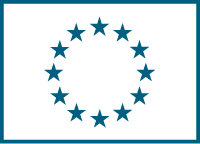4 projets européens trouvés
Recherche sur 125080 projets européens
TERMINÉ
Wir in Europa
Date du début: 1 juil. 2016, Date de fin: 30 juin 2018,
Participating in the first activity are the School of Horticulture Räpina / Estonia and our College of Further Qualification. We are linked by a long-time partnership within the framework of the LdV Programme Mobility in the first vocational training, and recently in ERASMUS+. The participating trainee gardeners and florists (first and second year of training) in Estonian companies, take part in s ...
Voir le projet
2
Participants partenaires
TERMINÉ
Wir in Europa
Date du début: 1 juin 2015, Date de fin: 31 mai 2017,
Participating in the first activity are the School of Horticulture Räpina / Estonia and our College of Further Qualification. We are linked by a long-time partnership within the framework of the LdV Programme Mobility in the first vocational training, and recently in ERASMUS+. The participating trainee gardeners and florists work in Estonian companies, take part in school life and in landscaping ...
Voir le projet
3
Participants partenaires
TERMINÉ
Kogemusõpe Euroopas/ Learning trough experience in Europe
Date du début: 1 sept. 2014, Date de fin: 31 août 2016,
Räpina School of Horticulture was founded in 1924 and is a vocational school with about 800 students of which half are distance-learners. Our school offers vocational qualification in fields of horticulture, environment protection, landscape gardening and construction, floristry and textile work. Our school offers secondary and upper secondary level vocational education for full-time students and ...
Voir le projet
12
Participants partenaires
TERMINÉ
Conservation of NATURA 2000 biotopes in Räpina polder ( RAPINA )
Date du début: 1 août 2003, Date de fin: 31 oct. 2006,
Background
The Räpina polder is located in the south-eastern corner of Estonia on the shores of Lake Peipsi and covers a total of 1550 ha. The polder was actively farmed by agricultural cooperatives during the Soviet era but only 30% of its land continued to be farmed after Estonian independence in early 1990s. The other 70% was largely abandoned and gra ...
Voir le projet



